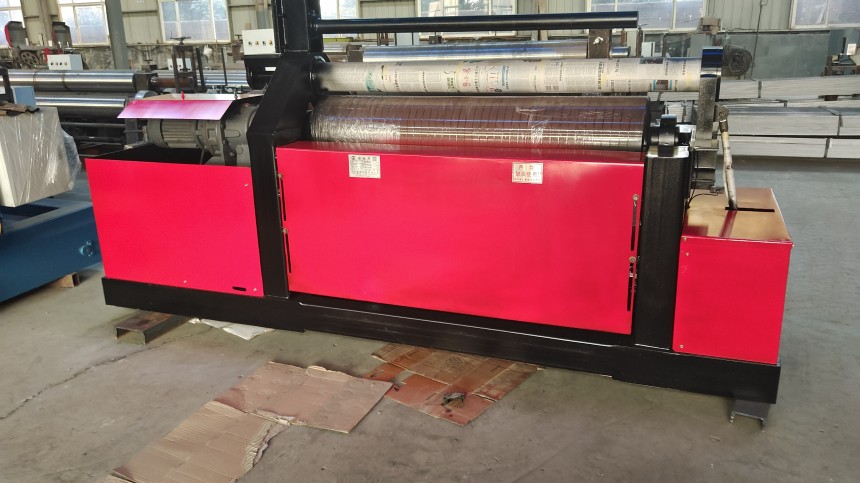

Demonstrating professionalism through expertise, with over a decade of dedicated focus on every aspect of plate rolling machine manufacturing, we now provide an in-depth interpretation of the practical significance of the key performance parameters of plate rolling machines:

As the core equipment for metal sheet forming and processing, the performance parameters of plate rolling machines directly impact processing capacity and product quality. A thorough understanding of the practical implications of these parameters enables operators to select equipment appropriately and optimize processing procedures. This article offers a practical interpretation of the key performance parameters of plate rolling machines.
1, Maximum plate thickness
The maximum plate thickness parameter indicates the maximum thickness of material that the equipment can process. This value is determined at room temperature for a specific material (typically Q235 carbon steel as the reference). In practical applications, it is important to note that when processing high-strength materials such as stainless steel, the effective processing thickness is typically reduced by 20%-30%. This parameter directly determines the range of workpieces that the equipment can handle. When selecting equipment, it is essential to consider the most common product thicknesses in the factory and allow for appropriate margin.
2, Maximum roll width
The maximum roll width parameter reflects the effective working length of the equipment rollers. This value determines the transverse dimensions of the sheet metal processed in a single operation. In actual production, excessively wide sheet metal may result in insufficient edge curling, so it is recommended that the conventional processing width not exceed 90% of the maximum parameter. At the same time, it should be noted that when processing extra-wide sheet metal, the processing thickness should be reduced accordingly to protect the equipment structure from damage.
3, Rolling speed
The rolling speed parameter indicates the linear speed of the roller shaft rotation, usually measured in meters per minute. This parameter affects production efficiency, but faster is not always better. High-speed rolling of thin plates can easily cause surface scratches, while thick plates require lower speeds to ensure forming quality. In actual operation, a medium speed of 2-6 meters per minute is the most widely applicable, ensuring both efficiency and quality.
4, Minimum roll diameter
The minimum roll diameter parameter indicates the smallest cylinder size that the equipment can roll. This value is closely related to the upper roll diameter and the arrangement of the lower rolls. When processing small-diameter cylinders, it is necessary to confirm that the equipment parameters meet the requirements, otherwise it may result in insufficient deformation of the sheet metal or the appearance of sharp edges. It is worth noting that continuous processing of workpieces close to the minimum diameter will accelerate mold wear.
5, Motor power
Motor power parameters reflect the power performance of the equipment. The power rating directly affects the ability to process thick plates and the stability of continuous operation. Insufficient power can lead to unstable speeds when processing thick plates and may even cause the motor to overload and shut down. However, blindly pursuing high power ratings will increase energy consumption costs. The appropriate power rating should be selected based on typical processing requirements, with a power margin of 15%–20% generally sufficient.
6, Roll shaft diameter
The roll shaft diameter parameter is a key indicator affecting equipment rigidity. Roll shafts with larger diameters have stronger bending resistance, ensuring straightness during long-format processing. However, excessively large roll shafts increase equipment weight and cost. For conventional processing, the roll shaft diameter should maintain a ratio of approximately 1:100 with the maximum processing width.
7, Equipment weight
Equipment weight parameters indirectly reflect structural strength and stability. Heavy equipment typically has better shock absorption performance and processing accuracy, but also places higher demands on foundation load-bearing capacity. During installation, it is necessary to ensure that the ground bearing capacity is at least 1.5 times the equipment weight to prevent foundation settlement after long-term use.
8, Return speed
The return speed parameter affects the working efficiency of the equipment. A faster return speed can shorten non-processing time, but it is important to ensure compatibility with the hydraulic system. Excessively fast return speeds may cause hydraulic shock, affecting the service life of the equipment. The ideal state is to maintain an appropriate ratio between processing speed and return speed to achieve a balanced rhythm.
Understanding the practical significance of these performance parameters helps you make the right decisions in actual production. When selecting equipment, you should comprehensively consider the characteristics of your factory's products and production requirements, and choose equipment with matching parameters. During operation, you should reasonably adjust the working parameters within the scope of the equipment's performance based on the specific processing materials and process requirements. Regularly check the equipment status to ensure that the actual performance is consistent with the rated parameters. This will allow you to fully utilize the equipment's potential and ensure processing quality and efficiency.
If you are interested in plate rolling machines, please contact us.
 Address:Room 1202, Detaitang Building, No. 118 Huaguang Road, Zhangdian District, Zibo, Shandong
Address:Room 1202, Detaitang Building, No. 118 Huaguang Road, Zhangdian District, Zibo, Shandong WhatsApp:+8615653328535
WhatsApp:+8615653328535 Wechat: +8615965331535
Wechat: +8615965331535  E-mail:zs@sdsmachinery.com
E-mail:zs@sdsmachinery.com